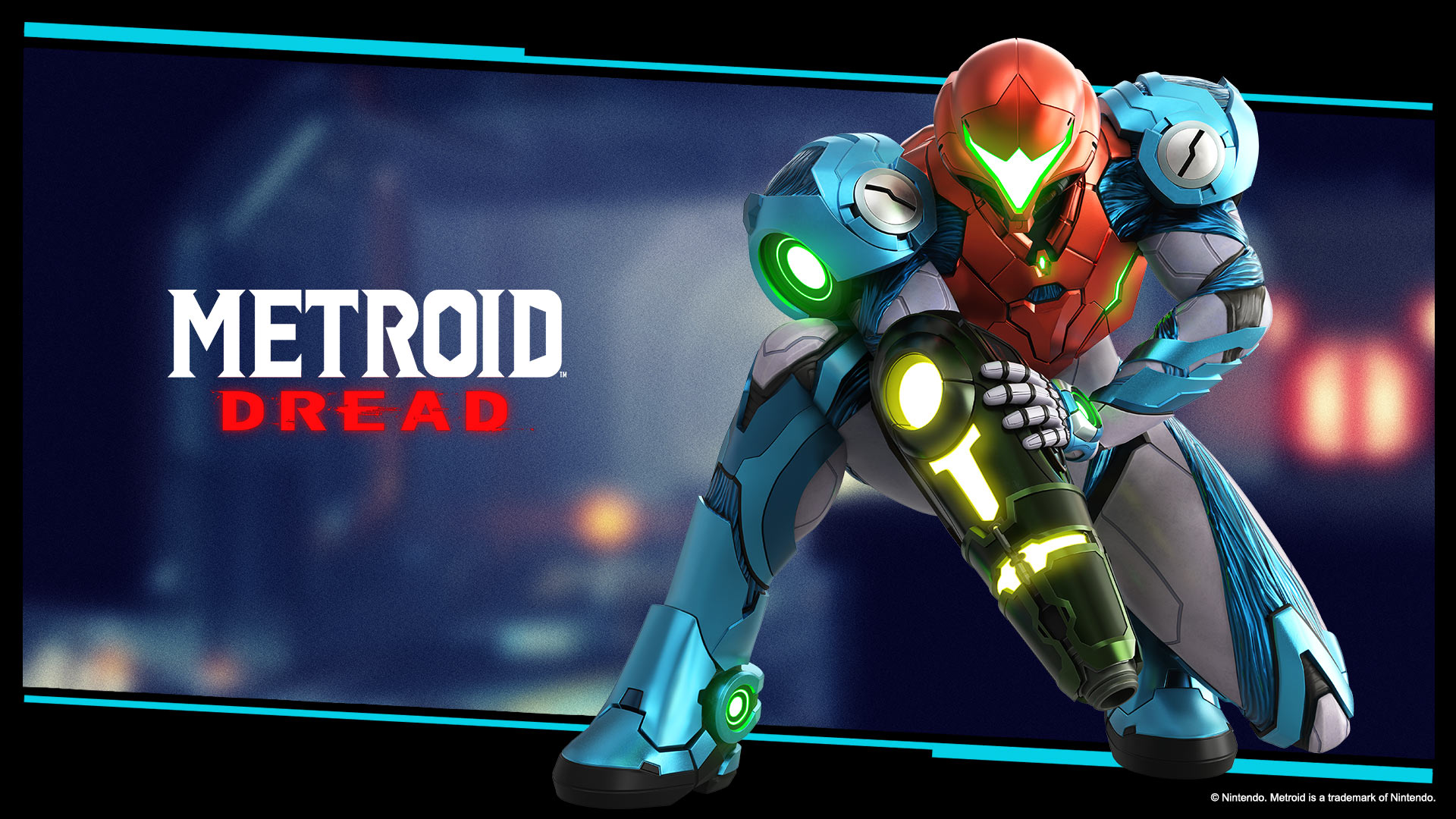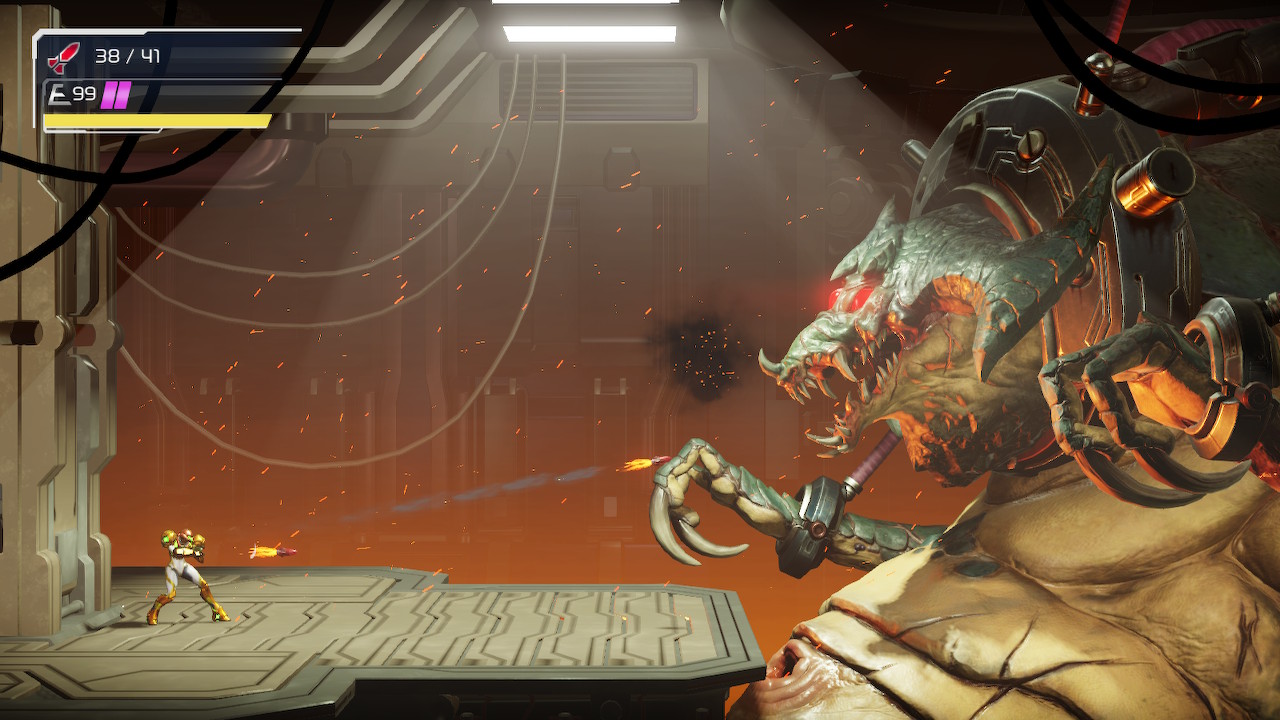It’s been an absurdly long time since we got a new Metroid game. 2017’s Metroid Samus Returns was a 3DS-exclusive remake of the original Game Boy hit Metroid 2. It was superb but still not a great push forward for the series. Releasing right at the transition point between Nintendo’s two systems meant Switch owners never got the chance to play it.
Metroid Dread is a full-on Switch sequel and definitely a reason to be excited. Dread adds an array of interesting new elements and abilities to Samus’ usual side-scrolling adventures but certainly doesn’t stray from the expected path of the previous games.
Metroid Dread Review: Don’t Dread the Return of Samus
This is absolutely a Metroid game in the purest, classic sense of the word. Anyone who’s ever played a game in the franchise will instantly know what to do here. On the same token, if for some reason you haven’t liked the series, Dread is unlikely to change your mind.
This time, Samus is sent to a planet ZDR after the Galactic Federation receives an anonymous video showing a deadly X parasite alive on the surface. As Samus is the only one in the galaxy vaccinated against X, only she can face down whatever threats lay in wait.
Dread’s major new edition to Metroid’s gameplay is a stealth and chase mechanic revolving around the Extraplanetary Multiform Mobile Identifier (E.M.M.I.) robots. These nigh-indestructible research bots were sent to ZDR initially to investigate the situation but then disappeared.
As it turns out, they’re still there doing rounds through certain parts of each map just waiting… for Samus, apparently.
To make matters worse, Samus still hasn’t installed any kind of backup or anti-tampering safeguards in her suit, so she promptly loses all her upgrades at the start of the game. A mysterious attacker overwhelms her and, as is the way of Metroid, forces Samus to start in her base suit.
Granted, the whole thing in Metroid is finding new abilities that, in turn, open new pathways, so this isn’t a surprising plot development.
As the game progresses, Samus earns a variety of both familiar and new upgrades. Better blasters, the morph ball and bomb, charge lasers, grapples, wall climbing, etc. We all know the drill. It’s the new additions that tie into the E.M.M.I. stealth and chase sequences that add distinction over past games.
For one thing, Samus gets invisibility, enabling her to hide from the robots (and pass through certain types of security doors). This sucks up energy and, if that’s depleted, her own health. The E.M.M.I. sections in each map are tense, full of blocked paths, multiple floors and doors, and can’t be avoided, so invisibility is helpful. Eventually, Samus reaches strange brain creatures who, upon death, bestow her with Omega energy.
The Omega cannon is the only weapon that can destroy an E.M.M.I. and lasts only as long as it takes to get rid of the pesky bot for that map section. These mini-boss battles against the bots are especially exciting since they force Samus to run from the bots, finding strategic spots to get shots off and charge up the gun for a well-aimed killing blow before the robot kills her.
Another major new element is the parry. Samus now has a melee attack based on timing that can deflect some enemy attacks (especially physical attacks).
Successful parries result in a stunned enemy left wide open for a quick cannon shot. During boss battles, which are impressively cinematic, there are parry-related sequences that allow for massive damage. You can even parry the one-hit-kill attack of the E.M.M.I. bots, but the timing for this is maddeningly hard to nail down.
Metroid Dread also looks superb. While the gameplay is entirely 2D, the game has a much more cinematic feel than earlier Metroids, and the environment looks and feels very three-dimensional. The multi-stage boss fights in particular use cinematic sequences as both transitions between stages and even some minor quick-time event-style bits to make things more epic.
The soundtrack is perfect as well, with all the familiar notes and effects that immediately identify the game as Metroid. On the downside, load times (especially when transitioning between areas) are noticeably slow. Also, this being Metroid, it can be infuriatingly easy to get lost in the labyrinthian maps.
Metroid Dread Review — The Bottom Line

Pros
- Looks superb and the atmosphere feels perfectly Metroid
- Huge maps with plenty of power-ups and secrets to discover
- Intense shooting, great exploration, and some stressful boss fights
- New elements add to the core gameplay
Cons
- Slow load times
- Getting lost can be maddeningly easy
Metroid Dread is a fine return to form for the long-running series and welcome addition to the Switch library. While the game as a whole feels absolutely familiar, the new elements are interesting enough to give the sequel a distinct feel.
Dread is one of Nintendo’s best Switch exclusives.
[Note: The copy of Metroid Dread used for this review was purchased by the writer.]









Published: Oct 11, 2021 08:16 pm